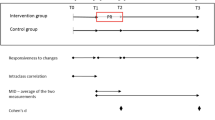Abstract
Objective: The specific objectives of this study were to: 1) study the effect of moderate-to-severe asthma on patient's Health-Related Quality of Life (HRQoL) as measured by the Medical Outcomes Study 36-item Short-Form Health Survey (SF-36) and 2) evaluate the construct validity of a modified and shortened version of the Living With Asthma Questionnaire (ms-LWAQ) using the SF-36 as a concomitant measure of HRQoL. Methods: Cross-sectional, telephone or mail surveys of asthmatic patients enrolled in two central Florida managed care organizations. Results: All subscales of the SF-36 and four subscales of the ms-LWAQ demonstrated adequate reliability in this population (Cronbach α > 0.72). The subscales of the SF-36 most affected by patient's asthma were: general health perceptions, vitality and physical role functioning. These three subscales were correlated with four subscales of the ms-LWAQ: consequences, seriousness, affect and leisure. Six of the eight SF-36 subscales and all of the ms-LWAQ subscales were associated with patient's emergency department and hospital utilization. Conclusion: The ms-LWAQ and SF-36 are valid as useful measures of asthma patient's HRQoL in this cross-sectional study. Severity of disease, as measured by health care utilization, was significantly associated with HRQoL.
Similar content being viewed by others
References
World Health Organization. www.who.org/aboutwho/ definition.html.
Schipper H, Clinch J, Powell V. Definitions and conceptual issues In: B Spilker (ed), Quality of Life assessments in clinical trials. Raven Press: New York, 1990.
Fansel S, Bush JW. A health-status index and its applications to health-services outcomes. Operations Res 1970; 18: 1021–1066.
Kaplan RM, Bush JW, Berry CC. Health Status: Types of validity and the Index of Well-being. Health Serv Res 1976; 11(4): 478–504.
Bergner M, Bobbitt RA, Carter WB, et al. The Sickness impact profile: Development and final revision of a health status measure. Med Care 1981; 19: 787.
Ware JE, Sherbourne CD. The MOS 36-item shortform health survey (SF-36)I. Conceptual framework and item selection. Med Care 1992; 30: 473–483.
Okamoto LJ, Noonan M, DeBoisblanc BP, et al. Fluticasone proprionate improves quality of life in patients with asthma requiring oral corticosteroids. Ann Allergy Asthma Immunol 1996; 76: 455–461.
Bousquet J, Knani J, Dhivert H, et al. Quality of life in asthma: I. Internal consistency and validity of the SF36 questionnaire. Am J Respir Crit Care Med 1994; 149: 371–375.
van der Molen T, Postma DS, Schreurs AJM, et al. Discriminative aspects of two generic and two asthmaspecific instruments: Relation with symptoms, bronchodilator use and lung function in patients with mild asthma. Quality Life Res 1997; 6: 353–361.
Hyland ME, Finnis S, Irvine SH. A scale for assessing quality of life in adult asthma su.erers. J Psychsom Res 1991; 35: 99–110.
Hyland ME. The living with asthma questionnaire. Respir Med 1991; 85b: 13–16.
Dillman DA. Mail and telephone surveys: The total design method. John Wiley and Sons: New York, 1978.
McHorney CA, Ware JE, Raczek AE. The MOS 36item short-form health survey (SF-36): II. Psychometric and clinical tests of validity in measuring physical and mental health constructs. Med Care 1993; 31: 247–263.
McHorney CA, Ware JE, Lu JFR, et al. The MOS 36item short-form health survey (SF-36): III. Tests of data quality, scaling assumptions, and reliability across diverse patients groups. Med Care 1994a; 32: 40–66.
McHorney CA, Kosinski M, Ware JE. Comparisons of the costs and quality of norms for the SF-36 health survey collected by mail versus telephone interview: Results from a national survey. Med Care 1994b; 32: 551–567.
Medical Outcomes Trust. How to score the SF-36 health survey. Boston: Medical Outcomes Trust, 1993.
Grainger-Rousseau TJ, Ried LD. Evaluation of patient's Quality of Life using the Living With Asthma Questionnaire. Abstracts of contributed papers, American Pharmaceutical Association, Nashville, TN, March 10, 1996; p. 81.
National Heart, Lung, and Blood Institute. International consensus report on diagnosis and treatment of asthma. US Department of Health and Human Services, Public Health Service, National Institutes of Health, Publication No. 92–3091, 1992.
Cronbach LJ. Coefficient alpha and the internal structure of a test. Psychometrika 1951; 16: 297–334.
SPSS. SPSSÒ Base 7.5 for WindowsÒ User's Guide. Chicago, IL: SPSS Inc., 1997.
Mahler DA, Mackowiak JI. Evaluation of the ShortForm 36-item questionnaire to measure Health-Related Quality of Life in patients with COPD. Chest 1995; 107: 1585–1589.
Olson AL, Johansen SG, Powers LE, et al. Cognitive coping strategies of children with chronic disease. J Dev Behav Pediatr 1993; 14: 217–223.
Ryan-Wenger NM, Walsh M. Children's perspectives on coping with asthma. Pediatr Nurs 1994; 20: 224–228.
Colland VT. Learning to cope with asthma: A behavioural self-management program for children. Patient Educ Couns 1993; 22: 141–152.
Jones PW. Quality of Life measurement in asthma. Eur Respir J 1995; 8: 885–887.
Rutten-van MoÈ lken MPMH, Custers F, Van Doorslaer EKA, et al. Comparison of performance of four instruments in evaluating the e.ects of salmeterol on asthma quality of life. Eur Respir J 1995; 8: 888–898.
Hyland ME, Kenyon CAP, Jacobs PA. Sensitivity of quality of life domains and constructs to longitudinal change in a clinical trial comparing salmeterol with placebo in asthmatics. Quality Life Res 1994; 3: 121–126.
Grainger-Rousseau TJ, McElnay JC. A model for community pharmacist involvement with general practitioners in the management of asthma patients. J Applied Therap 1996; 1: 145–161.
Treurniet HF, Essink-Bot M-L, Mackenbach JP, et al. Health-Related Quality of Life: An indicator of quality of care? Qual Life Res 1997; 6: 363–369.
Aas K. Heterogeneity of bronchial asthma. Allergy 1981; 36: 3–10.
Author information
Authors and Affiliations
Rights and permissions
About this article
Cite this article
Ried, L.D., Nau, D.P. & Grainger-Rousseau, T.J. Evaluation of patient's Health-Related Quality of Life using a modified and shortened version of the Living With Asthma Questionnaire (ms-LWAQ) and the medical outcomes study, Short-Form 36 (SF-36). Qual Life Res 8, 491–499 (1999). https://doi.org/10.1023/A:1008974406669
Issue Date:
DOI: https://doi.org/10.1023/A:1008974406669




